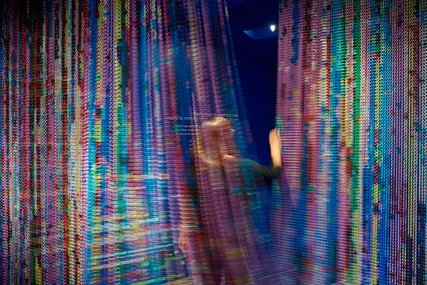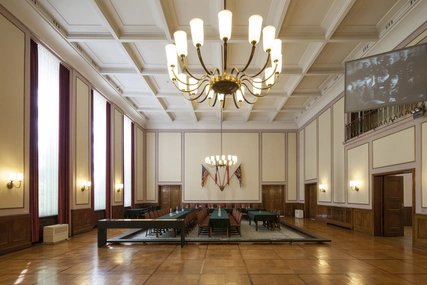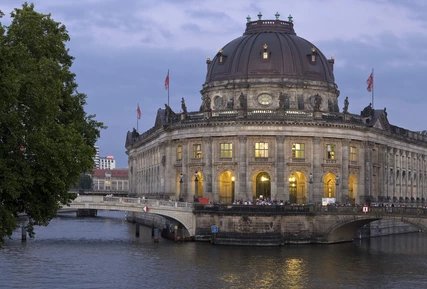
Everything seems to be getting more expensive these days, doesn't it? The good news is Berlin is quite possibly the best city in the world for having fun without spending much money. Have a look at our list of how to get the most out of Berlin's museums and attractions without putting your hand in your pocket.
By the way, we have compiled special information on free admission to museums and attractions for children and young people.
Tip 1: Free museums

Berlin has some outstanding free museums. The Jewish Museum's permanent exhibition is a must-see, as is the nearby ANOHA, the Children's World of the Jewish Museum. You can get a fascinating history lesson on the German parliamentary system from 1848 to present day in the German Cathedral on Gendarmenmarkt. But it's not just history that's free: so, too, are art and culture at the PalaisPopulaire on Unter den Linden, which is full of changing contemporary art exhibitions. Find a more in-depth list of Berlin's free museums here.
Tip 2: Free historical places

Some of Berlin's most compelling historical locations have excellent exhibitions that are free to the public. Directly at Friedrichstraße, the Tränenpalast was the border checkpoint between East and West Berlin; today it hosts a powerful and evocative exhibition allowing visitors to experience the checkpoint procedures firsthand.
To the west, the Alliierten Museum (Allied Museum) has permanent and temporary exhibits on the western powers in Berlin, including a plane that was used in the Berlin Airlift. Even further west, on the shores of lovely Wannsee, is Haus der Wannsee Konferenz, a gorgeous villa where monstrous evil was planned—this is where Nazis drew up their plans for the Holocaust. It's now a tranquil and stirring place of education. Finally, in the east of the city, Museum Berlin-Karlshorst is where WW2 officially ended. You can visit the hall where the Wehrmacht's unconditional surrender was signed, view a collection of Soviet tanks and see perspectives on the war from both the Soviet and German points of view.
More about history museums in Berlin
Tip 3: Unusual museums with free entry

Berlin isn't just about the past. The Futurium is a space for meditation on the future of humanity and how we want to live—in a building constructed to the highest environmental standards. Its exhibits are fascinating musings on the future of science, technology and architecture. Just a short walk away is the Veterinary Anatomy Theatre. This beautiful old building—the oldest educational building in the city—was a research and training centre for veterinarians. It now hosts science, history and art exhibitions about animal anatomy.
Another unusual museum is the Stabi Kulturwerk on Unter den Linden, boasting an eclectic collection of library-related artefacts, including the Gutenberg Bible (the first printed book in Europe) and the original score for J. S. Bach's Mass in B Minor.
Tip 4: Museum Sunday

On the first Sunday of every month, participating museums in Berlin open their doors free of charge to the public. Some of the more popular museums require booking your free ticket in advance. Every corner of Berlin is represented: from the Citadel in Spandau to the Kindermuseum unterm Dach in Lichtenrade to Museum Köpenick to Museum Reinickendorf, you'll find a great museum to visit for free no matter where you are in the city.
Tip 5: Museum Pass

The Berlin Museum Pass costs €29 and grants free entry to over 30 museums and exhibitions around the city for three consecutive days. All of the big hitters on Museum Island are included in the offer, including the Pergamon, the Old National Gallery and the New Museum.
When you consider that visiting just those three museums would normally cost €38, getting the Museum Pass really is a no-brainer for museum lovers. If you can time your visit to coincide with a Museum Sunday, then you'll certainly be the most knowledgeable and cultured person in the city.
Tip 6: Memorial sites and monuments

Berlin recognises how important it is to remember, and thus has created many quiet places for serene contemplation of the past. The Memorial to the Murdered Jews of Europe, right in the centre of the city, is the most famous example of such a place and probably the most essential place to visit on your trip to Berlin. The Berlin Wall Memorial on Bernauer Straße is a similarly compelling place of remembrance that is well worth a visit.
More about memorials sites in Berlin
Tip 7: Berlin WelcomeCard

The Berlin WelcomeCard is an essential addition to any visit to Berlin. Like the Museum Pass, it pays for itself very quickly. There are various versions available with validity from 48 hours to six days, but they all do essentially the same: cover all of your transport needs while providing huge discounts on almost 200 attractions, restaurants, museums, shops and experiences.
Tip 8: Go for a run and see the sights on foot

The Berlin Marathon is rightly one of the most famous and popular sporting events in the world, but did you know that Berlin is a wonderful city to run in even for non-elite runners? Tiergarten is a fabulous oasis of leafy tranquillity right in the centre of the city, and, if you plan your run well, you can visit the Reichstag, the Brandenburg Gate and the Victory Column without ever leaving the park. Further south, Tempelhofer Feld, on the site of a former airport, is a totally unique park perfect for running in—although you'll need to dress for the wind that sometimes sweeps the treeless field. To the west, Grunewald presents a somewhat tougher challenge with trail paths and hills. But don't forget that just picking streets at random to run is an excellent way to get to know the city and discover hidden corners.
Tip 9: Statues in Berlin

Berlin is so full of sculptures and statues that at some point you stop noticing them—but, if you stop and take a moment, you'll appreciate the vast diversity of historical figures, philosophies and movements that they represent. Unter den Linden is full of old emperors on horses. The Schlossbrücke is lined with Greek deities. Treptower Park has a stunning statue memorialising fallen Soviet soldiers. The Georg Elser Memorial at Wilhelmstraße 90 remembers a failed attempt on Hitler's life. At Rathenau-Platz are two Cadillacs set in concrete…and so much more. Just go for a walk and keep your eyes peeled.
Tip 10: Street Art

It's often like this: What seems particularly cool and fresh is actually just incredibly versatile and sometimes already millennia old. But it has retained the power to reinvent itself again and again. Street art is probably the best example of this. This art form has found a real biotope in Berlin and has conquered the city as a stage.
Our ABOUT BERLIN App comes with a tour of Berlin's street art.
More about Street Art in Berlin
Tip 11: Galleries

Auguststraße in Mitte has in recent years become a hub of contemporary art in the city and hosts the Berlin Bienniale for Contemporary Art every two or three years. Wander around and see what you find, but be sure to stop at the KW Institute for Contemporary Art. Or visit the the galleries in the City West.




